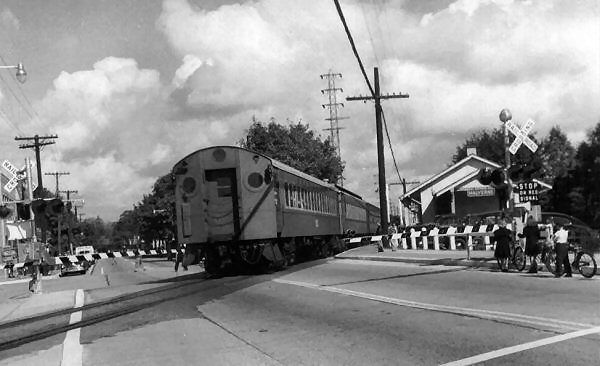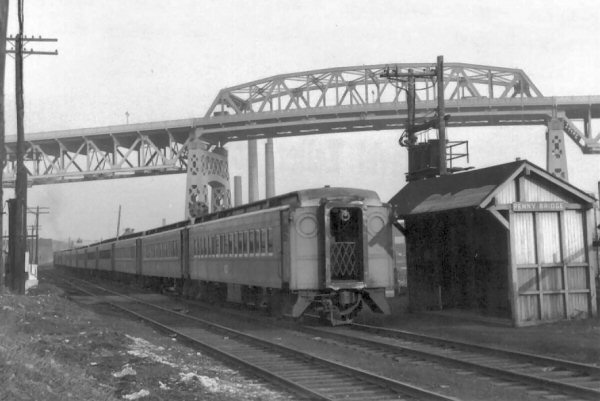First: The gauntlet track was at RVC, not Valley Stream. RVC = 1949-50
Valley Stream = 1932-33. Two different decades entirely. The wreck at RVC was February, 1950.
Second: I have no scans, but a nice shot of a double decker train ON the gauntlet track is in my sequel book.
Third: Valley Stream, as ALL the stations elevated, had shoo-fly tracks during the elimination process. The shoo-fly tracks at Valley Stream were, per general order #116-5C, (in ETT effective 6/19/32), located NORTH of the original track location effective 8/10/32. G.O. #116-7C (same ETT) moves the station facilities BACK south of the former location (location of 8/10/32) effective 8/31/32.
I doubt anything remains of the temporary shoo-fly roadbed after 73 years. It's possible that the remains of what you see at Valley Stream SOUTH of the main could very well be a siding that was removed some time ago, but since the elimination and you're seeing the remains of the grading and roadbed. (I'd have to check my maps and see if there were any sidings coming down to grade level AFTER the elimination.)
As an extra bit of history at Valley Stream: during the elimination, manned interlocking stations (cabins) "CA", "HO" and "HW" were placed in service on the Montauk branch and "GI" and "RO" on the beginning of the Far Rock branch! Must've been one busy place at the time!!!!!!
At RVC, "CENTRE" manned interlocking station (cabin) was placed in service 4/19/49.
Dave

